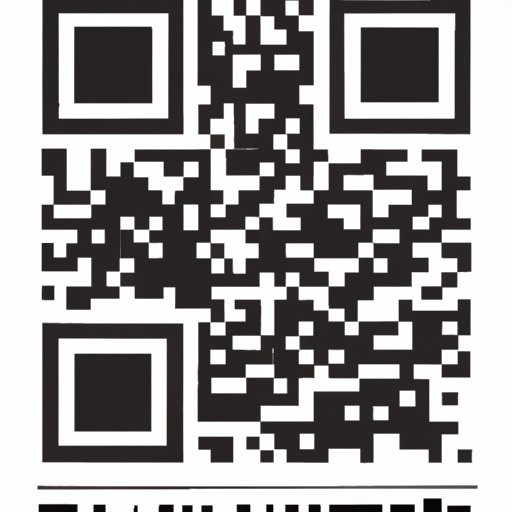
Introduction
Have you ever seen a small square with black and white dots around it on a poster or webpage and wondered what they were? Chances are it was a QR code. QR (Quick Response) codes are a popular way to share information and can be read by smartphones by scanning the code. Knowing how to make QR codes can help individuals and businesses drive traffic to websites, social media pages, online stores, and more. In this article, we’ll provide a step-by-step guide on creating QR codes, review QR code generators, and explore trends and use cases for the QR code technology.
Step-by-Step Guide
The process of creating QR codes is relatively straightforward and can be done in five steps:
- Choose a QR code generator. There are many QR code generators available online, some are free, and some require payment for additional features. Some of the most popular generators include Unitag, Kaywa, and QR Code Generator.
- Select the type of QR code you want to create. QR codes can hold various types of information such as plain text, URLs, email addresses, phone numbers, and more. Choose the type of QR code that fits your purpose.
- Input your content. Enter the text, URL, image or other content that you want the QR code to represent.
- Customize your QR code. You can customize the code by changing colors, adding a logo or image, and applying other design elements. This is a favorite option for businesses that want to match their QR code design to their brand.
- Test your QR code. Test your code with a QR code reader app to make sure it is functional and leads to the intended content.
Below are step-by-step visual aids to help you create your QR code, or to see if you have done it correctly.
Video Tutorial
Here’s a video tutorial that summarizes the previously mentioned steps. Watch the video to help guide you, and avoid any common mistakes.
Infographic
The below infographic provides a quick summary of the steps you need to follow to create your QR code. Use this as a reference or guide as you work through the process.
QR Code Generator Review
There are dozens of QR code generators out there, but some are better than others. Here’s a comparison of some popular QR code generators and their pros and cons:
| QR Code Generator | Pros | Cons |
|---|---|---|
| Unitag | Customizable, versatile | Free version has limited features |
| Kaywa | Easy to use, good tracking capabilities | Less customizable than other generators |
| QR Code Generator | Simple, user-friendly, affordable | Design options are limited |
Consider what features are most important to you, research other Code generators, and choose the one that best fits your goals and budget.
Case Studies
QR codes are used in many different industry sectors in creative ways. Here are three examples:
1. Starbucks
Starbucks placed QR codes on cups. Cardholders could scan the code with their app to pre-order and pay for their next drink.
2. Museum Tours
Museums use QR codes in their exhibits to give visitors more information about the artwork. This information can be viewed on a smartphone or a tablet.
3. Real Estate Listings
Real estate agencies put QR codes on their yard signs, linking to a page with more details about the house, the neighborhood, and the realtor’s contact information.
Industry Trends
QR codes are used across many industries, often as part of a larger marketing or advertising campaign. Here are a few recent trends and use cases:
1. Retail Industry
Retailers are using QR codes on product tags to provide additional information, product reviews, and user-generated content. QR codes can also be used in-store to advertise sales and promotions and provide a contactless payment option.
2. Restaurants
Restaurants use QR codes to provide digital menus, share coupons and promotions, and link to online ordering sites.
3. Print Advertisements
It is common to find QR codes in print ads, on billboards, and in magazines. Print ads with QR codes can provide a more interactive experience and allow for more targeted advertising.
Conclusion
Creating QR codes is a simple process that can offer many benefits for personal or business use. With this article, you should have the knowledge and tools to create your own custom QR code. Remember, testing your code can save you from disappointment, having to start over again, or worse, lose business.
Keep in mind that QR codes are not a one-size-fits-all solution and that you should choose the right QR Code generator for your business needs. By staying up-to-date with QR code industry trends, you can stay ahead of the competition and take full advantage of this versatile technology.





